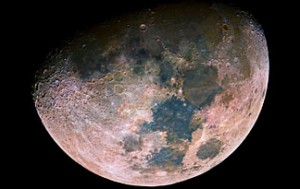Earth’s Mysterious Moon Confounds Science, Again…
Countless mysteries abound about our moon, some more esoteric than others.
Is the moon a hollow space station created eons ago by extraterrestrials? Is it actually a chunk of the Earth blown off by a collision with Planet X, or Nibiru, as recorded by the ancient Sumerians? (This is in fact very similar to the predominant theory held by science about how our moon was created – see below.) Or is the moon an artificial satellite carefully put into place by our creators (or ancestors?) in order to allow for the important life-sustaining Earth phenomena that are linked to the precise placement of our moon (tides, etc.)?
In any case, new analysis of moon rock suggests that we know even less about Earth’s mysterious moon than we thought – but exactly how much less?…
by Sid Perkins
A new analysis of a lunar rock brought back by the 1972 Apollo 16 mission suggests that the moon could be tens of millions of years younger than previously thought. Another possibility, scientists say, is that current models of how the moon cooled in its early years may be totally wrong.
The predominant theory of the moon’s origin holds that a Mars-sized object slammed into Earth soon after the solar system formed about 4.56 billion years ago. After the impact, large volumes of melted material splashed into space, coalesced, and cooled into today’s moon. Previous studies of lunar rocks suggest that the sea of molten rock covering the lunar surface began to solidify anywhere between 4.43 billion and 4.53 billion years ago. But those dates aren’t very precise, largely because the concentrations of the trace elements used in the dating techniques are extremely low, says Lars Borg, a planetary scientist at Lawrence Livermore National Laboratory California. Now Borg and his colleagues have used several methods of radioactive dating to come up with a new—and surprising—date for when the moon’s magma ocean cooled…
For the complete article click here to go to ScienceMag.org.
For the Top Ten Moon Mysteries from DiscoverySpace, click here.
Share
